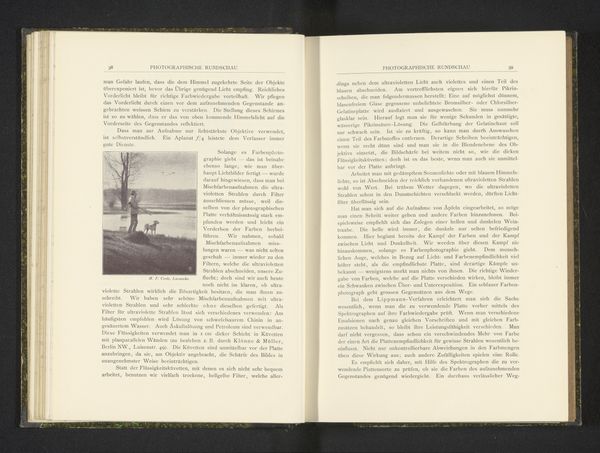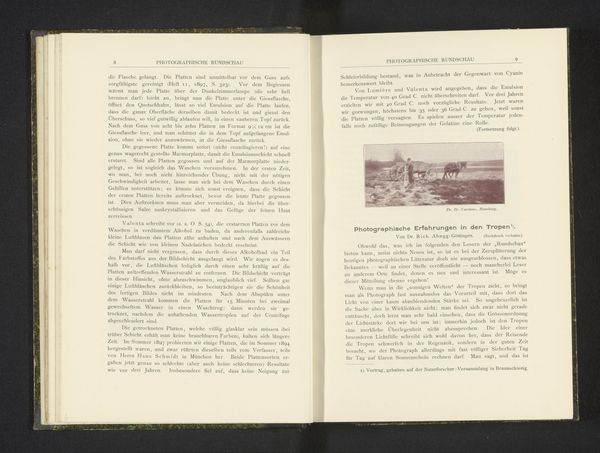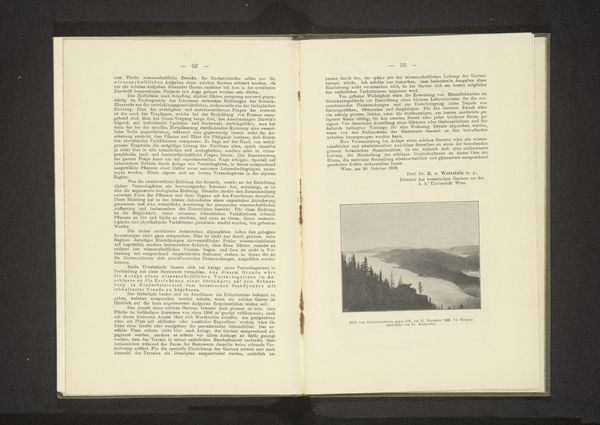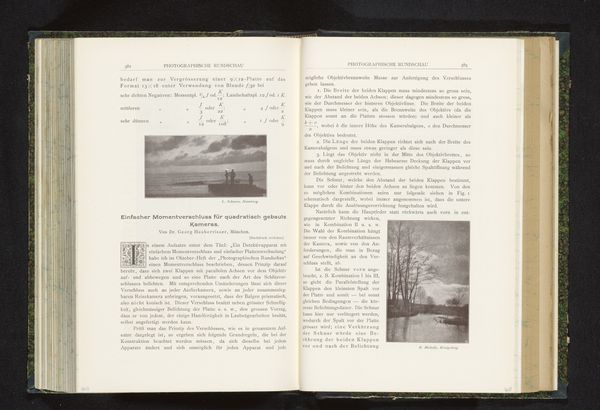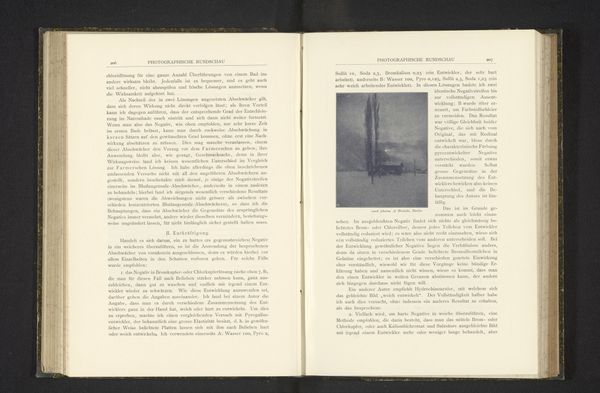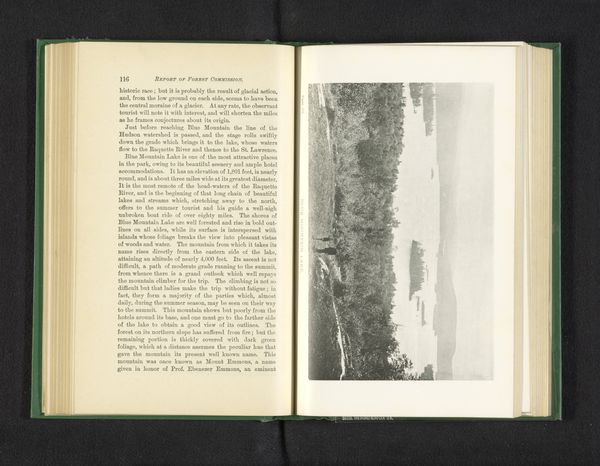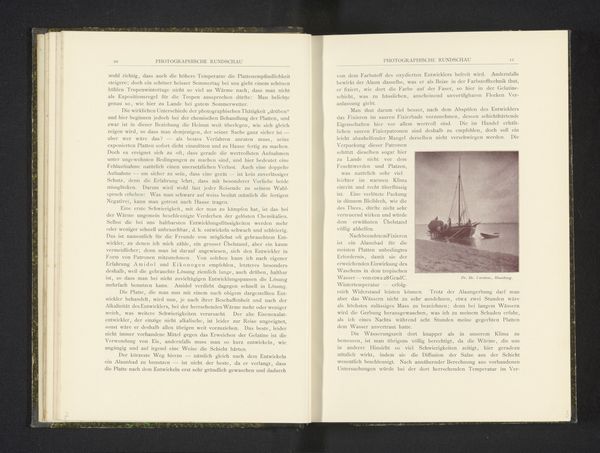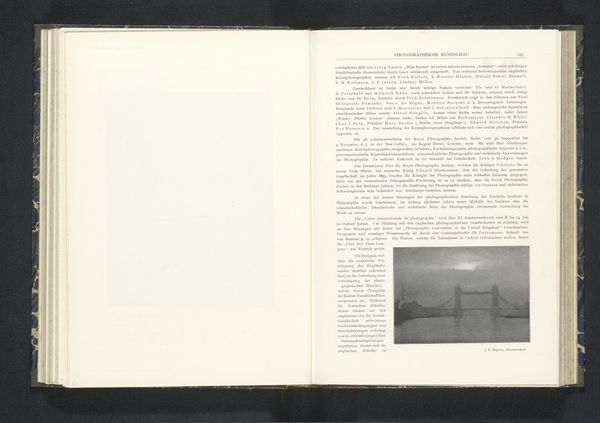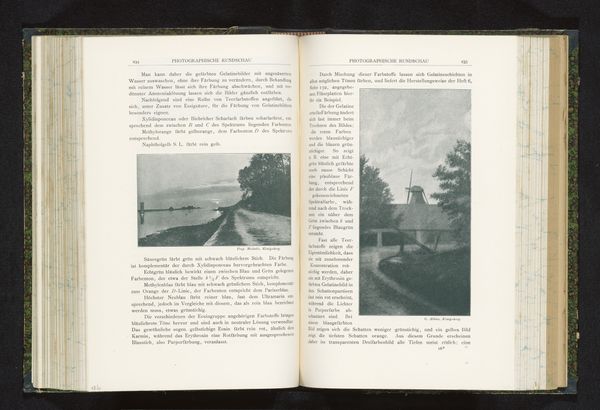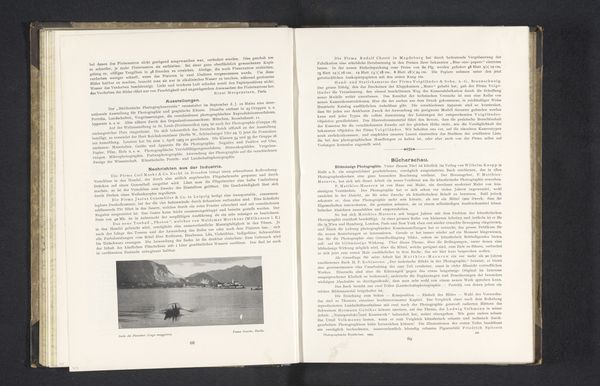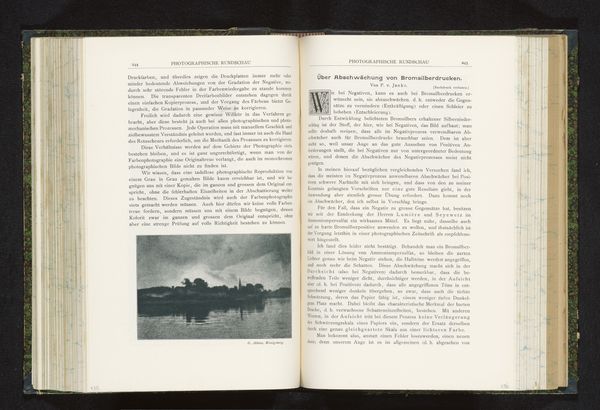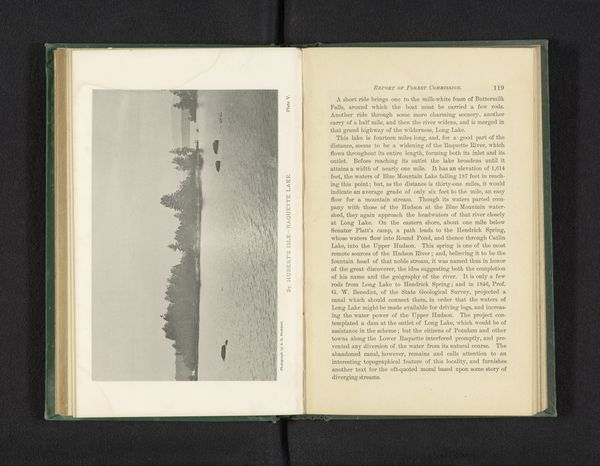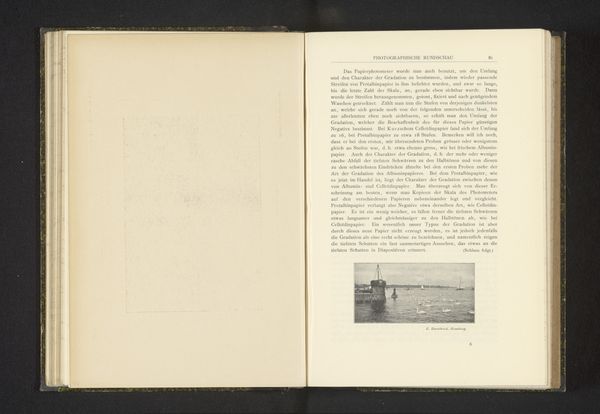
print, photography
# print
#
book
#
photography
#
monochrome
Dimensions: height 103 mm, width 79 mm
Copyright: Rijks Museum: Open Domain
Curator: So, we're looking at "Winterlandschap" – it's actually a photograph reproduced in a book from before 1899. I find it interesting how photography at this time was vying for acceptance as a legitimate art form, hence being showcased within the pages of a book celebrating artistic achievements. Editor: My first thought is how minimal the composition is, almost monochromatic. The snow-covered ground blends seamlessly into the sky; it feels bleak and quite serene all at once. It really speaks to the inherent beauty of such landscapes. Curator: Indeed. Considering this photograph was presented within a publication, it makes you wonder about the audience and the prevailing aesthetic tastes. Was it meant to evoke a romantic vision of the Dutch landscape, or to document the harsh realities of winter life? I'd argue it reflects an ongoing need for representations that elevate the 'common' to the realm of fine art. Editor: For me, what stands out is the artist's mastery of light and shadow. Look at the subtle gradations across the snow, those faint tracks, possibly human or animal—they ground the vastness of the scene. There's a compelling tension created by this juxtaposition of form against open space, light, and its absence. Curator: It would be interesting to see where this publication circulated, as that would give us insight to the photographic traditions it's trying to promote. There are likely other artists working at the time in parallel, working to use photography as a documentary means to communicate particular events. Editor: The photographer makes an amazing visual impact, really bringing home this cold sense of what winter represents. It is the balance between formal considerations of light and form as the foundation and what it signifies in cultural experience, really creating a piece of impact here.
Comments
No comments
Be the first to comment and join the conversation on the ultimate creative platform.
